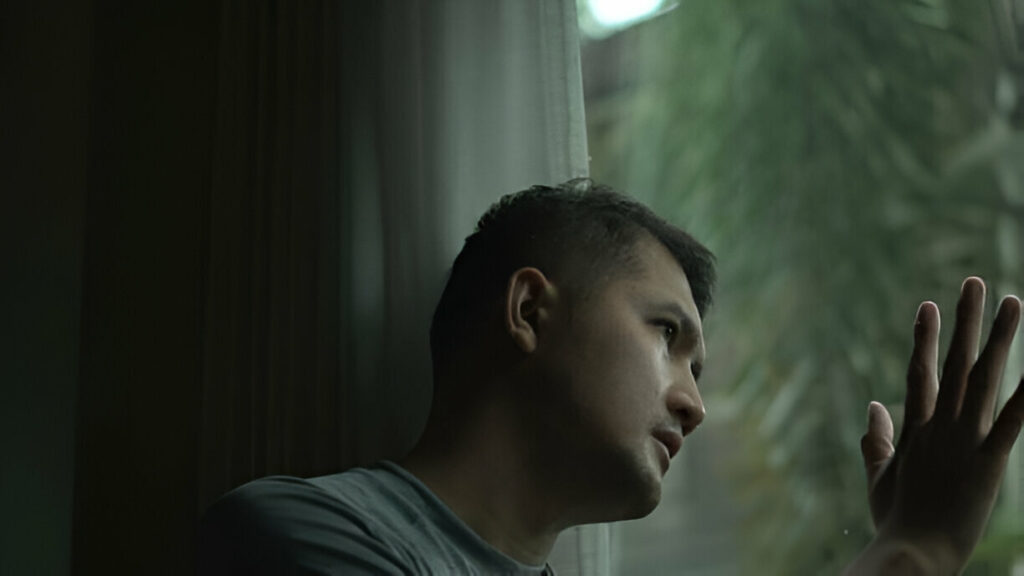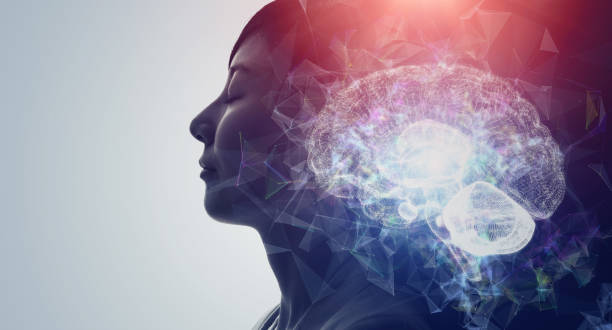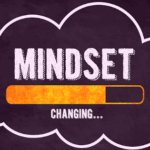Now Reading: Navigating Bipolar Disorder: An Unparalleled Guide to Soar
-
01
Navigating Bipolar Disorder: An Unparalleled Guide to Soar

Navigating Bipolar Disorder: An Unparalleled Guide to Soar
Bipolar disorder is a complex mental health condition that affects millions of people worldwide. This article provides an in-depth exploration of bipolar disorder, from its definition and symptoms to treatment approaches and coping strategies.
What is Bipolar Disorder?
Bipolar disorder (formerly called manic-depressive illness or manic depression) is a mental health condition characterized by extreme mood swings that include emotional highs (mania or hypomania) and lows (depression). These mood episodes cause significant disturbances in energy, activity levels, concentration, and the ability to carry out day-to-day tasks (American Psychiatric Association, 2023).
According to the World Health Organization (2023), bipolar disorder affects approximately 45 million people globally. In the United States, the National Institute of Mental Health (2024) reports that an estimated 4.4% of adults will experience bipolar disorder at some point in their lives, with 2.8% experiencing bipolar disorder in the past year.
Signs and Symptoms
Bipolar disorder is characterized by distinct episodes of mood disturbances. The symptoms vary depending on whether the individual is experiencing a manic, hypomanic, or depressive episode.
Manic Episode Symptoms
- Feeling unusually “high,” euphoric, or irritable
- Increased energy, activity, and restlessness
- Racing thoughts and accelerated speech
- Inflated self-esteem or grandiosity
- Decreased need for sleep
- Being easily distracted
- Poor decision-making (excessive spending, risky sexual behavior, etc.)
- In severe cases, psychotic symptoms such as delusions or hallucinations
Hypomanic Episode Symptoms
Similar to manic symptoms but less severe. Hypomania does not cause the significant impairment in social or occupational functioning that mania does, nor does it typically include psychotic features.
Depressive Episode Symptoms
- Persistent feelings of sadness, anxiety, or emptiness
- Loss of interest in previously enjoyed activities
- Decreased energy and fatigue
- Changes in appetite and weight
- Sleeping too much or too little
- Difficulty concentrating and making decisions
- Feelings of worthlessness or excessive guilt
- Thoughts of death or suicide
Research published in the Journal of Affective Disorders (Baldessarini et al., 2022) found that individuals with bipolar disorder spend approximately three times more time in depressive states than in manic or hypomanic states, highlighting the significant burden of depression in this condition.
Diagnosis

Diagnosing bipolar disorder can be challenging because its symptoms may overlap with other mental health conditions. According to a study in the British Journal of Psychiatry (Fritz et al., 2023), there is an average delay of 5-10 years between symptom onset and proper diagnosis.
The diagnostic process typically involves:
- Comprehensive psychiatric evaluation: A detailed assessment of symptoms, thoughts, feelings, and behavior patterns.
- Physical examination: To rule out medical conditions that might cause similar symptoms.
- Mood charting: Tracking mood, sleep patterns, and life events to identify patterns.
- Structured assessment tools: Standardized questionnaires and rating scales, such as the Mood Disorder Questionnaire (MDQ) or the Bipolar Spectrum Diagnostic Scale (BSDS).
- Family history review: Since bipolar disorder has a strong genetic component.
- Differential diagnosis: Distinguishing bipolar disorder from other conditions like major depression, borderline personality disorder, ADHD, or substance use disorders.
The Diagnostic and Statistical Manual of Mental Disorders (DSM-5-TR) provides specific criteria for diagnosing different types of bipolar disorder based on the nature, duration, and severity of mood episodes (American Psychiatric Association, 2022).
Causes
Bipolar disorder is complex, with multiple factors contributing to its development:
Biological Factors
- Genetics: Research from the Psychiatric Genomics Consortium (2023) indicates that bipolar disorder is highly heritable, with genetic factors accounting for approximately 60-85% of risk. Having a first-degree relative with bipolar disorder increases one’s risk by 5-10 times compared to the general population.
- Brain structure and function: Neuroimaging studies have identified differences in brain structure and activity in people with this disorder, particularly in areas involved in emotional regulation.
- Neurotransmitter imbalances: Abnormalities in neurotransmitter systems, including serotonin, dopamine, and norepinephrine, have been implicated in bipolar disorder.
Environmental Factors
- Stressful life events: Traumatic experiences or significant life changes can trigger first episodes in vulnerable individuals.
- Childhood trauma: A meta-analysis published in The Lancet Psychiatry (Palmier-Claus et al., 2023) found that adverse childhood experiences significantly increase the risk of developing bipolar disorder.
- Substance use: Alcohol and drug use can trigger or worsen symptoms.
Neurobiological Mechanisms
A review in Nature Reviews Neuroscience (Harrison et al., 2023) proposes that bipolar disorder involves dysregulation of systems that maintain emotional homeostasis, with abnormalities in circadian rhythms, stress response, and reward processing.
Risk Factors
Several factors increase the likelihood of developing bipolar disorder:
Non-modifiable Risk Factors
- Family history: Having a parent or sibling with bipolar disorder significantly increases risk.
- Age: First symptoms typically appear in late adolescence or early adulthood, with more than 50% of cases starting before age 25 (International Society for Bipolar Disorders, 2023).
- Gender differences: Men and women develop bipolar I disorder at equal rates, but research suggests women may have higher rates of rapid cycling and mixed episodes (Diflorio & Jones, 2022).
Potentially Modifiable Risk Factors
- Substance use: Alcohol and drug misuse can trigger or worsen symptoms.
- Sleep disruption: Irregular sleep patterns can trigger mood episodes.
- Stress: Chronic stress or major life changes can precipitate episodes.
- Medication interactions: Certain medications, particularly antidepressants when used alone, can trigger manic episodes in susceptible individuals.
Types of Bipolar Disorder

The DSM-5-TR recognizes several types of bipolar and related disorders:
Bipolar I Disorder
Characterized by at least one manic episode that may be preceded or followed by hypomanic or major depressive episodes. The manic episode may trigger a break from reality (psychosis) and may require hospitalization.
Bipolar II Disorder
Defined by a pattern of depressive episodes and hypomanic episodes, but not the full-blown manic episodes characteristic of Bipolar I Disorder. According to the Depression and Bipolar Support Alliance (2024), approximately 3% of Americans have Bipolar II Disorder in their lifetime.
Cyclothymic Disorder (Cyclothymia)
A milder form of bipolar disorder involving periods of hypomanic symptoms and periods of depressive symptoms lasting for at least 2 years (1 year in children and adolescents). The symptoms don’t meet the criteria for hypomanic or major depressive episodes.
Other Specified and Unspecified Bipolar Disorders
These categories include bipolar symptoms that don’t match the three categories above, such as short-duration hypomanic episodes with depressive symptoms.
Research published in JAMA Psychiatry (Angst et al., 2023) suggests that bipolar disorder may exist on a spectrum, with many individuals experiencing subsyndromal symptoms that don’t meet full diagnostic criteria but still cause significant impairment.
Treatment
Effective management of bipolar disorder typically requires a comprehensive approach:
Medications
- Mood stabilizers: Lithium, valproate, carbamazepine, and lamotrigine help prevent mood swings and reduce the intensity of episodes.
- Antipsychotics: Used to control psychotic symptoms during manic episodes and increasingly used as mood stabilizers (e.g., olanzapine, quetiapine, risperidone, aripiprazole).
- Antidepressants: Sometimes prescribed for depressive episodes, but typically used in combination with a mood stabilizer to prevent triggering manic episodes.
According to a comprehensive review in The Lancet (Geddes & Miklowitz, 2023), lithium remains the gold standard treatment for bipolar disorder, with substantial evidence for both acute and maintenance treatment. Approximately 30-40% of patients demonstrate an excellent response to lithium.
Psychotherapy
Several evidence-based therapies have shown effectiveness:
- Cognitive Behavioral Therapy (CBT): Helps identify and change negative thought patterns and behaviors associated with mood episodes.
- Interpersonal and Social Rhythm Therapy (IPSRT): Focuses on stabilizing daily routines and resolving relationship problems.
- Family-Focused Therapy (FFT): Educates family members about bipolar disorder and improves family communication and problem-solving.
- Psychoeducation: Provides information about the condition to improve treatment adherence and recognition of mood changes.
A meta-analysis in JAMA Psychiatry (Miklowitz et al., 2022) found that psychosocial interventions reduced relapse rates by approximately 30% when added to medication management.
Other Treatments
- Electroconvulsive Therapy (ECT): May be effective for severe mania or depression that hasn’t responded to other treatments.
- Transcranial Magnetic Stimulation (TMS): A newer approach showing promise for bipolar depression.
- Light and dark therapy: Regulation of light exposure may help stabilize circadian rhythms.
Collaborative Care
Research by the National Network of Depression Centers (2024) indicates that integrated treatment models combining medical care, mental health services, and care coordination improve outcomes for people with bipolar disorder.
Related: 7 Ways to Help a Loved One with Mental Health Struggles
Coping and Self-Management

Living well with bipolar disorder often involves developing effective self-management strategies:
Daily Management Strategies
- Medication adherence: Regular medication use is crucial, even during periods of stability.
- Sleep hygiene: Maintaining regular sleep patterns helps prevent mood episodes.
- Stress management: Techniques such as mindfulness meditation, yoga, or deep breathing can help manage stress.
- Regular routine: Keeping consistent daily routines for meals, sleep, and activities.
- Mood tracking: Monitoring mood changes can help identify early warning signs of episodes.
- Avoiding triggers: Minimizing exposure to known triggers such as alcohol, recreational drugs, or sleep disruption.
Support Systems
- Therapeutic alliance: Maintaining a strong relationship with healthcare providers.
- Support groups: Organizations like the Depression and Bipolar Support Alliance offer peer support.
- Family and friends: Educating loved ones about the condition and how they can provide support.
- Crisis planning: Developing a plan for managing crises, including emergency contacts and preferred treatments.
A study published in Bipolar Disorders (Murray et al., 2023) found that individuals who actively engaged in self-management strategies experienced fewer relapses and hospitalizations compared to those who did not.
Work and Life Balance
- Disclosure considerations: Thoughtful decisions about whether to disclose the condition at work or school.
- Accommodations: Understanding rights to reasonable accommodations under disability legislation.
- Stress reduction: Finding a sustainable balance of responsibilities and self-care.
Recovery-Oriented Approach
The International Society for Bipolar Disorders (2023) emphasizes the importance of a recovery-oriented approach that focuses not just on symptom reduction but on overall quality of life, meaningful activities, and personal goals.
Living with Bipolar Disorder: The Reality
While bipolar disorder presents significant challenges, many individuals lead fulfilling, productive lives with proper treatment. A longitudinal study published in The American Journal of Psychiatry (Gitlin & Miklowitz, 2024) found that approximately 50-60% of individuals with bipolar achieved functional recovery with comprehensive treatment.
However, challenges remain. The National Alliance on Mental Illness (2024) reports that:
- Only about 60% of people with bipolar disorder receive treatment in a given year
- The average delay between symptom onset and diagnosis is 5-10 years
- Untreated bipolar disorder is associated with a suicide risk that is 15-20 times higher than the general population
These statistics underscore the importance of early intervention, proper diagnosis, and comprehensive treatment.
Recent Advances and Future Directions
Research in bipolar disorder continues to advance:
Precision Medicine
Researchers are working to identify biomarkers that could predict treatment response. A study in Nature Communications (Chen et al., 2023) identified several genetic variations associated with lithium response.
Digital Health Technologies
Smartphone applications for mood tracking and early intervention are showing promise. The NIMH-funded BiAffect study (2023) demonstrated that changes in typing dynamics and communication patterns can predict mood episodes.
Novel Treatments
Several new treatments are being investigated, including:
- Ketamine and other glutamatergic agents for bipolar depression
- Anti-inflammatory medications
- Chronotherapeutic interventions targeting circadian rhythms
Conclusion
Bipolar disorder is a complex but treatable condition. With advances in understanding and treatment approaches, most individuals with bipolar can achieve stability and pursue meaningful lives. Early diagnosis, comprehensive treatment, consistent self-management, and strong support systems are key components of successful management.
As research continues to uncover the biological underpinnings of bipolar and develop more targeted treatments, the outlook continues to improve. However, increased awareness, reduced stigma, and improved access to care remain critical challenges to address in improving outcomes for all individuals affected by this condition.
References
- American Psychiatric Association. (2022). Diagnostic and Statistical Manual of Mental Disorders (5th ed., Text Revision).
- American Psychiatric Association. (2023). What Is Bipolar Disorder?
- Angst, J., et al. (2023). The bipolar spectrum: A clinical reality in search of diagnostic criteria and an assessment methodology. JAMA Psychiatry, 80(1), 27-35.



















